
From the first humans to migrate out of Africa 60,000 years ago, to the first men that walked on the moon 46 years ago, travellers throughout the ages have been pondering a deep and important question:
“Cash, card, or travellers cheques?”
And it appears they still are, as I recently noticed on a travel forum. As my response grew, so did my realisation that the topic falls squarely into my ONE Project theme of “travelling smarter”. So I’ve expanded my response here, to help you save money and reduce stress, too.
These lessons and habits were developed from the kinds of places I usually go (read: not rich countries). But they apply everywhere. One of my most ridiculously-adventurous mates had his worst travel experiences not in Johannesburg, nor in Rio – but in Ottawa. So nowhere is too safe to practise good habits.
(Except Japan. Man, is that country safe!)
Here are 9 tips on obtaining, exchanging, protecting, and carrying (or not-carrying) your money when travelling.
1) Forget everything else and just use ATMs
They are everywhere these days. They’re in Kyrgyz mountains, Nepalese jungles, and (I can hardly believe it) Burma! 1
The rest of your choices are either barely accepted anywhere (credit cards); not worth the banks’ fees (travel debit cards); or both (traveller’s cheques).
I was shocked to see what Aussies get gauged fo travel debit cards: A hello-that’ll-be-$15-thanks card issue fee, plus a oh-you’d-like-your-money-now $3.50 fee on every withdrawal. What a load of rubbish.
2) Obtain your local currency upon arrival (from the ATMs in the airport)
Every international airport I’ve ever landed in during the last 6 years has had an ATM inside it.
I give this advice for frugality reasons, but also because it’s an exhilarating feeling landing in a foreign place with NO MONEY! (or even more exciting, when you run out of cash during your trip 2) Even when you’re as sure as I am to find an ATM quickly. I guess it’s like rock climbing – you know the rope will keep you safe, but you’re still scared as hell.
The only thing that can ruin your day with this rule is if the country has a visa fee: They often occur before you have ATM access (eg Indonesia & Tajikistan). Which is why I advise you to follow tip #3:
3) At the end of every trip, convert excess currency into USD, and store in your money belt for the next trip
This is to ensure you have a few bucks to get you into your next country, or worse case, to pay a cabbie to bring you to an ATM (if you manage to somehow find the one international airport without an ATM).
Try to avoid exchanging money at the airport – moneychangers in major urban areas will give you better rates. But more importantly, some airports won’t have an open exchange office, and some countries’ currencies cannot be traded abroad (I made this mistake when leaving Tajikistan, and have a stack of useless somoni. Anyone want a bookmark?)
4) Never change money in a western airport
If you’re thinking of changing money before your trip, see #1 and #2.
If you’re thinking of changing money after your trip, see #3.
If you do, however, need to change at an airport, I hope it’s in Asia. I find many airports there (eg Dubai, Singapore and KL) have acceptable rates, and no commissions.
5) Minimise or eliminate withdrawal fees
To avoid withdrawal withdrawal, don’t let the banks win. The best solution is obviously to find a bank that has no ATM fees abroad (eg Citibank). I’m not sure which others have this available, but with Citi I can withdraw even $10 from a foreign ATM and my only fee is the spread (ie the hidden fee inside the exchange rate which you always pay. Unless you own a bank).
Most other people with normal banks get gauged a $5 fee for each withdrawal. This sucks.
So if you must pay such ATM fees, a great option is to halve them. If you have a travel partner. How? Take turns making double-sized withdrawals and splitting the money between you both. That way you’re splitting the ATM withdrawal fee in half.
Some banks offer different fee structures (like no withdrawal fees if you pay a monthly fee and keep an enormous balance) so it’s worth a quick check with your bank. But you’ll probably find the bank will still be screwing you. Just in a different way.
6) Bring at least two ATM cards, and keep them separate
I have Aussie and Canadian bank accounts, so I have two ATM cards. I keep them separated (one in my bag, one in my wallet or money belt) in case one is stolen.
You might not have two bank accounts, but don’t fret – I have a solution for you too! Bring a credit card as your backup ATM card.
Credit cards can be used at ATMs – this is called a ‘cash advance’ . But be warned: you’re immediately charged interest on those withdrawals.
So if your ATM card is stolen and you need use your credit card at ATMs to withdraw money, send money ASAP from your bank into your credit card account. The amount must cover your current balance, plus what you’ll spend during the trip.
If you’re wondering how this works, it’s because the money you send puts your credit card balance into debit. Thus, no interest is charged on your cash advances (because the credit card company is not loaning you any money).
7) Make notes about dodgy ATMs
ATMs are like people: they’re not perfect. They make mistakes sometimes.
If you ever get a dodgy ATM, record the date, time, location, bank, and any ID numbers of it. You may need this info if the ATM has robbed you, to get your money back from your home bank.
For instance, in La Paz as the ATM prepared to dispense my bolivianos, it hiccuped and told me “Machine Error”. Nothing came out of the slot… but $300 came out of my account! I got it back, but my bank needed details from me, to open the claim against the offending bank.
8) Never carry more cash than you would be ‘comfortable’ having thieved
Because it will happen, one day.
I’ve heard too many sob stories from people who lost $300, $500, or even $800 in cash. They were dumb enough to carry weeks worth of currency around. Why why why would you do that, in a country with plentiful ATMs?!
One guy that comes to mind we met in a restaurant in Peru. He had put his bag at his feet, full of all his local currency plus lots of “emergency” Euros. He was cleverly robbed, by someone who must have crawled under his table. Some sort of child-ninja.
My “comfortable having thieved” amount is $250. That’s how much I’ll carry home from an ATM or when moving between destinations. And I usually hedge it by storing the cash across multiple locations (money belt, wallet, and mother-pack).
That being said, since for me losing even $50 really hurts, I carry much less than $250 on regular travel days (ie the days I’ve got a home base). On those days I only carry two days of cash in my wallet, and leave the rest in my hotel.
“Your hotel?” you say. “Don’t you stay in some budget cheapos?” Why yes, I do, and if you do too, then you need to make a decision:
Who do you trust more? Your hotel staff, or yourself amongst people on the street?
The answer determines where to store the extra cash you have. I generally trust hotels, so I leave it there. 3 Though one could quite easily take the opposite stance and keep it all on them, somewhere pickpocket proof, for at least one reason: If you’re going to be robbed, a mugging story is better than a ‘robbed from my hotel-room’ story.
9) Never keep more money in your account than you need for your trip
It’s rare, but not unheard of, that people are kidnapped and their bank accounts drained before being released.
It happened to people in our hostel in Bolivia. I’m sure there are places where you could be held for ransom instead – and then your bank account wouldn’t matter – but if you’re travelling to Somalia or into war zones you’re probably not looking for advice from my website.
I don’t want to scare anyone off from travelling: This is the only time I’ve ever heard of it, and I’ve met a lot of travellers. But there’s no hassle or harm in doing it, so why not do yourself a favour and keep that bank balance low.
<-> <-> <->
I was very lucky to start my travel ‘career’ in Central and South America. I say lucky not just because they’re beautiful, interesting, fun and cheap; but because I consider this region in the travel safety “Goldilocks Zone”. It’s dodgy enough to train good habits, but not so dodgy that you’re liable to have an AK47 pressed into your skull.
(As an aside, if anyone’s starting their own travel careers, I recommend these countries for this reason. Develop good money habits and you will decrease both the risks and the consequences of any problems – in all countries.)
And for those more-seasoned travellers: Have I missed any key advice? Have you got any strategies that you reckon are better? I’d love to hear them.
-Mike
- I say that because in 2010 if we ran out of cash on our trip to Burma, the nearest ATM was in Thailand
- Like that time my mate and I spent our last $2 on a donkey-cart ride into the Nepalese jungle. We had to wait an hour for other passengers to share with, and even then stand on the side of their cart, since our $2 was insufficient fare
- but in a locker, buried deep inside my backpack, inside the pillow, or under the mattress. Don’t forget it when you checkout!

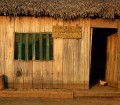

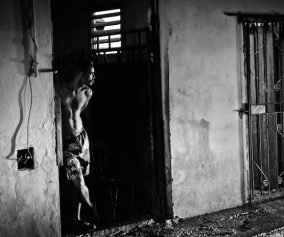
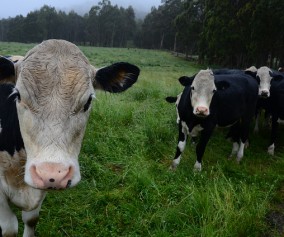
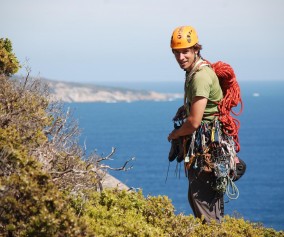


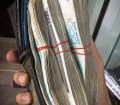





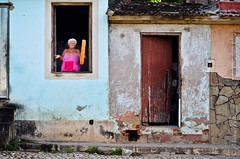



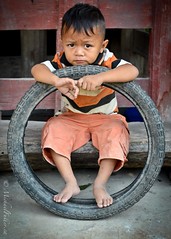
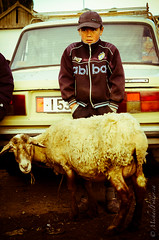

In regards to banks that don’t charge heaps for international withdrawals, the American bank USAA does a great job for travelers from the United States. No fees for foreign ATM withdrawals and their international conversion rate is laughably low. The company is also quick to respond when your card goes on walk-about (as they sometimes do) while you’re abroad. Double win!
Erika that’s a great one to add to the list, for any fellow Yanks reading my page! Thanks for your $0.02 (or is that $0.019 after fees?)